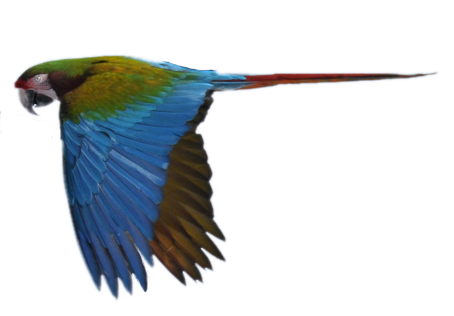
To The Perch & Back Again
Training the “Fly To Perch & Back” Game
Written By Chris Biro, Copyright 2008
Flying back and forth between a perch and your arm can be a wonderful game both for training purposes and for entertainment purpose and is great practice to maintaining recall stimulus control as well as build muscle tone when non outdoor flying conditions exist.
To start this “game” I first work on getting recall responses from a perch or cage top. This is often started at the same time I am training a cued recall response but may also be trained at any time or age. I start this process by first target training the bird and then use the target to lure the bird to land on my arm. Once I have the bird coming to my arm for a treat I then start placing the bird back onto the perch to eat the treat. I like to use a sizable solid treat like a peanut in the shell for this part of my training so there is a reason for them to return to the perch – to eat the peanut. Once I have them easily stepping onto the perch to eat their treat, I will start asking them to fly to the perch from a foot or two away. This is usually very easy to get started since they already understand the need to get there, to eat their treat. We then continue to systematically increase the distance until they are flying to the perch from the full distance available. For me this training always starts indoors or in an aviary as I want this behavior very reliable indoors before we work on it outdoors. Most often I am using peanuts or sunflower seeds for these treats but have used chips, fries, bread and other snacks.
“Do you need to treat for being on the perch?”
In the very beginning I might click and treat for being on the perch but normally I do not. I usually click for the flight to my arm, immediately deliver the treat to them and then prevent them from eating the treat until they are on the perch again. “Click for the behavior and treat for position” was a saying Bob Bailey used. I have had the privilege of meeting Bob Bailey on a coupe of occasions and believe he deserves his reputation as the the ultimate in training authority. He have trained more animals than probably anyone on the planet and has an amazingly solid understanding of the sciences involved with animal behavior modification. Anyway, the idea here is to reinforce the desired behavior and use the delivery of the treat to set them up for the next repetition. The click marks the event that earned them the goody but this still leaves us an opportunity to determine where/how the treat gets delivered. This is a secondary function of the treat but it can be helpful.
As to if this is important to continue on a regular basis, I do not keep doing this for very long. I will use the treat fly back to the perch to help establish this behavior and once it has been working well for a while then I will fade the treat back to the perch concept. They may or may not get a treat that they can fly back with is what I am saying here. I am not saying that I avoid giving them a treat to fly back with at any time. So in the beginning I am looking to make sure that as I start to teach them to fly to the perch, they have a treat to eat once they get there. But after this behavior becomes established I don’t worry about it one way or the other.
Usually they seem to react as if the opportunity to do another recall rep is reinforcement enough. This would be a secondary reinforcer just like the click is a secondary reinforcer. Secondary reinforcers can be very powerful if built up correctly. Money is the classic secondary reinforcer example and look at how powerful it is. Once the bird has already figured this out it will often volunteer to fly back to the perch. It wants to be ready to do it again so that it can get another goody. Just so you know, this is way cool, but be aware that such behavior can also take the form of doing a behavior that you do not want so that you will call them away from the item or area they are NOT supposed to be playing with. So keep the alternative form in mind so that when those start happening you can take appropriate action to NOT reinforce the undesired behavior involved.
Parrots: more than pets, friends for life.Chris Biro
Resources and More
The Pirate's Parrot Show
An educationally based pirate-themed parrot show performing at state and county fairs since 1991. The Pirate’s Parrot Show is a Fun, Educational, and Interactive experience for all ages and cultures.
Bird Recovery International
One in every eight bird species in the world today is in danger of extinction and these numbers are increasing! Find out how this non-profit organization started by Chris Biro can help save and protect parrots and other birds.
Podcasts with Chris Biro
An Alternate Perspective – Enjoy these audio Podcasts of Chris with guests discussing the nature of training flighted birds. The discussions are intended to be loosely structured around a general topic.
Email Us
chris@libertywings.com
Call Us
(206) 618-2610
Contact Us
By Using the Contact Form
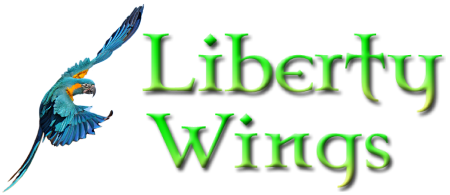
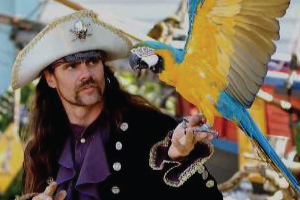
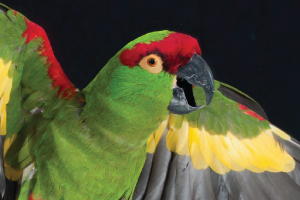
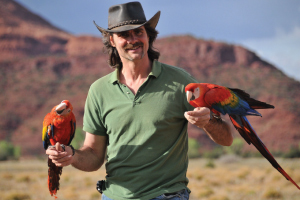
Hi Chris,
I have a young rose breasted cockatoo who as you have predicted, has started to fly onto the coffee table (she knows that she is not allowed there) so I will call and she can fly back to me. At first I was happy that she was flying to me and treated her for it, when I withhold the treat she does it again and again and again until I finally treat her. What should I do? Should I go over and pick her up straight away, not giving her the opportunity to fly back to me? I am worried that she will decide that flying back to me is not worth it and I don’t want to punish her with ‘cage time’. Also, what should I do if she does not respond to my call?
Thanks, Amba & Pink
I would put a T perch near the table. Treat her for flying to you from the T perch. It should not take her long to figure out that flying to you from the perch gets her goodies. Once you have this started, then stop treating her for flying from the table. She should starting using the perch to get her treats from you.
Hi Chris,
I’ve got a problem with a pied crow, Ghost, he’s 10 months old – he goes to the perch quite every time I ask him to, from any point of the room, but although he initially came easily to me, he now refuses nearly everytime, unless he hasn’t eaten all day. When I call, he turns his back to me or click his beak, or even crow at me. He is less reluctant to come on my knee, so I wonder if it is related to the fact that I need to get him on my hand to put him in his pen, although I try to get him to do this himself.
He has always been free to fly in the house, and comes with me outside when it’s sunny – he generally takes off, flies in a circle, lands somewhere near my feet and stay goofing around. I can make him jump between two perchs, but not if they are too far apart (or he needs to be starved). He won’t come to me, but recognizes his name and stay near, although he got lost a few times, but always came back near the launching area.
He isn’t very food motivated, and always have been quite a reluctant flyer – he flies when there is a very good reason : fright, chasing a pigeon, or asking him to go to the perch. He has no interest in learning tricks (apart from targeting but he doesn’t want the treat, he likes gnawing on chopsticks), and may beak when I try to teach him to give his foot or do circles or else. He’s clicker trained but as he isn’t very interested in food, I dunno if the clicker is useful.
What should I do ?I’m running in circles here and getting frustrated, and he is too, I think. Recall, even step-up, if he isn’t hungry or very motivated by a toy, doesn’t work at all. And beyond shredding and tearing at everything, he isn’t interested in anything.
I’d be really happy to have some advice, because I’m beginning to think about taking in another bird and giving up recall for Ghost, while letting him wander around freely.
Thanks,
Laure&Ghost
There is no such thing as a bird that is not food motivated. If the bird will not show interest in your food items, it is because of the way you are feeding it. Change the way you are feeding it and it will become interested in food treats. Some people seem to have real trouble with this. It seems they have some rigid ideas about how the bird must be fed and are unwilling to alter these. If that is the case then I would suggest you give up on the idea of training your bird. If not, then try altering your feeding schedule. For instance, feed the bird once per day in the late afternoon. Give it as much as it wants to eat each day but only in the late afternoon. If you feel you must, let it eat breakfast before removing its food bowl and do not put it back until the evening meal time. It will remain perfectly healthy and it won’t lose weight. But I will bet you that you will no longer claim it is not food motivated. This is essentially the feeding routine our birds were on when we let them loose to spend the day flying on the property. They are just fine, perfectly healthy and with a keen interest in our peanuts throughout the day.